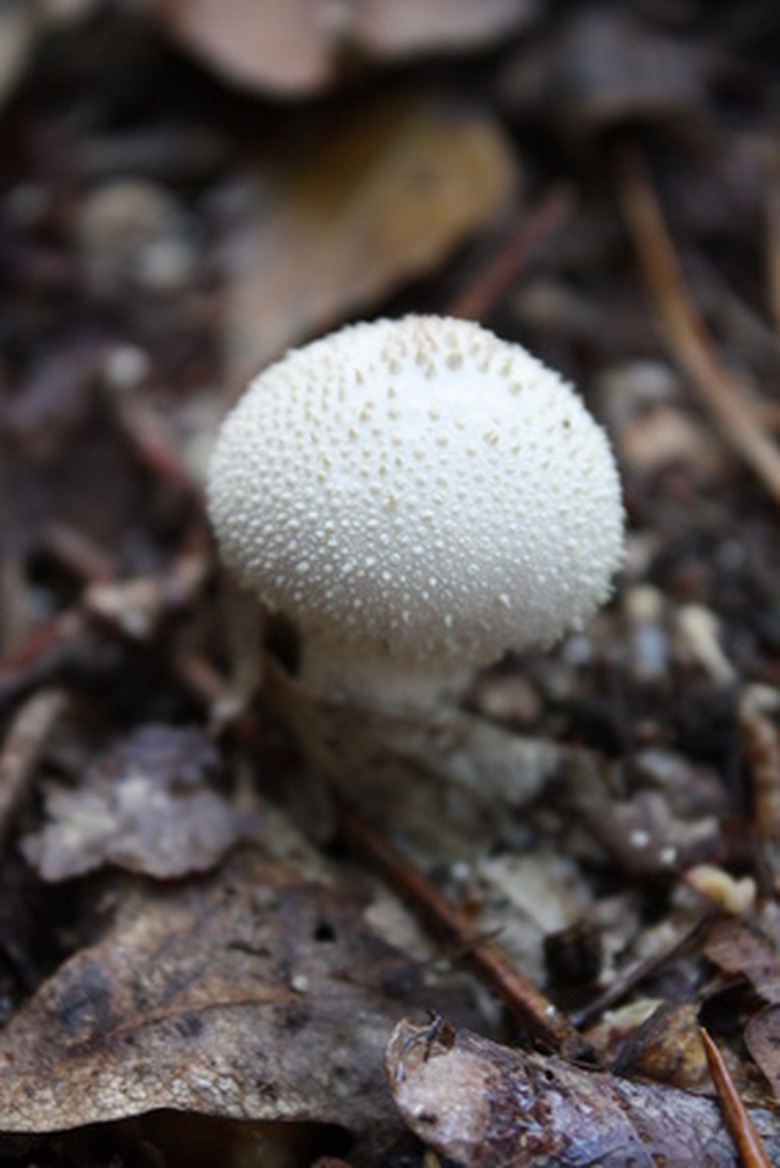Mushrooms That Grow In Mulch
Mushrooms that grow in mulch may appear as quickly as overnight after a rain and display a variety of shapes, colors and sizes dependent upon the strain of fungus from which they are produced. Mushrooms that grow in mulch are either feeding on the mulch itself or the bacteria harbored within. The fungi do not pose a threat to your landscape but can be poisonous if ingested.
Puffball Mushrooms
Puffballs are mushrooms that grow in mulch, according to the University of Illinois Extension. As explained by the University of California's IPM Online, puffballs are cream/white in color with a round structure. The mushroom develops a hole in its top during maturity when it releases thousands of its dark-hued spores. Puffball mushrooms measure up to approximately 1 inch in height. Like other mushrooms, puffballs grow on plant material in the process of decaying and do not pose a significant threat to your plants or lawn. Puffballs can be left or removed by hand.
- Mushrooms that grow in mulch may appear as quickly as overnight after a rain and display a variety of shapes, colors and sizes dependent upon the strain of fungus from which they are produced.
- Like other mushrooms, puffballs grow on plant material in the process of decaying and do not pose a significant threat to your plants or lawn.
Stinkhorn Mushrooms
Stinkhorns are mushrooms that grow in mulch, according to the University of Illinois Extension. The stinkhorn is an erect mushroom that protrudes from the mulch like a finger, as described by the University of Illinois Extension; stinkhorns appear slimy because of the spore-containing substance that resides on top of the mushroom. The slime-covered tip of the stinkhorn has a very foul odor (stinks), which attracts insects and flies; the bugs transport and spread spores by landing on the slime and picking it up, according to the University of California's IPM Online. To rid your mulch of stinkhorns, remove them by digging or handpicking them; however, remember that stinkhorns are not dangerous to your lawn and generally only pose an aesthetic problem.
Mushroom-like Fungus
Slime mold, because it is a fungus, is commonly referred to as a mushroom. Though it is not a fruiting body, this fungus is considered a mushroom that grows in mulch. Slime mold thrives on decaying organic matter like mulch, according to the University of California's IPM Online, but like puffballs and stinkhorns, will not adversely affect your plants or lawn. This form of fungus forms "a gooey mass" of white, gray, yellow, brown or red mold within and on the surface of your mulch; slime mold is commonly referred to as "dog vomit" due to its unsightly appearance, according to the Penn State Research and Agricultural Extension. Once dry, the mold usually disappears on its own; to remove the mold immediately, rake or mow the area or use a hose to spray it away with water. Though not dangerous to your lawn, slime mold can cause a small amount of damage by covering plant life beneath it and blocking out sun and air.
- Stinkhorns are mushrooms that grow in mulch, according to the University of Illinois Extension.
- The stinkhorn is an erect mushroom that protrudes from the mulch like a finger, as described by the University of Illinois Extension; stinkhorns appear slimy because of the spore-containing substance that resides on top of the mushroom.
